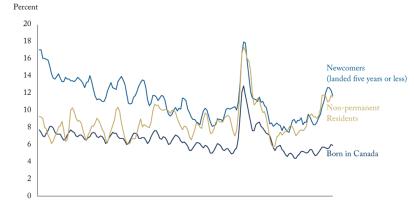In this edition of Graphic Intelligence, we compare average marijuana prices calculated using different methods. Using crowd-sourced data on illegal prices, we show that Statistics Canada’s estimates are higher than the “true” price on the street.
One of the primary aims of cannabis legalization in Canada is to reduce the illegal market. In order to successfully achieve this, the price difference between legal and illegal cannabis must be kept small. Retailers and policymakers are likely benchmarking the price of legal cannabis to estimates of prices in the black market. Overestimating prices in the black market could impact pricing and taxation decisions by provincial government agencies, and result in a legal market that captures a lower percentage of the total market.
Statistics Canada calculates the average price per gram of marijuana using the transaction price, meaning it does not consider the size of purchases when calculating its average and treats purchases of an ounce or more as equal to the purchase of a single gram. We argue that giving more ‘weight' to larger purchases (ie., a four-gram purchase would be counted as 4 purchases of 1 gram) yields a better estimate of the actual price than treating all purchases as equal. To illustrate with a simple example: suppose two transactions are recorded, one in which four grams are purchased for an expenditure of $20, and one in which one gram is purchased for $10. The price per gram is $5 in the first case, $10 in the second. The average price paid per gram is $6 on a weighted basis ($30 / 5 grams = $6), and the average price per gram on an (unweighted for quantity) basis for the transactions is $7.50 ($5 + $10 / 2 = $7.50). Statistics Canada uses the latter method to calculate average prices.
Statistics Canada chose average transaction price because it is uncertain that the consumption and expenditure patterns of the individuals submitting data to the website are representative of the population in general. We also examine if the crowd-sourced sample data are representative of population data to assess the validity of Statistics Canada’s uncertainty.
Figure 1 compares average price estimates for a gram of marijuana calculated using different weighting methods to the unweighted Statistics Canada estimates. All the weighted-average price estimates account for the quantity of marijuana purchased per transaction. We also calculate alternate estimates of the average price per gram that account for user consumption frequency and percentage of demand, as seen in the crowd-sourced data sample and in Canadian survey data. We see that all our weighted-average price estimates are lower than those of Statistics Canada.
Figure 2 plots the average price per gram against the quantity of marijuana purchased. We see that a buyer purchasing an ounce (28.4 grams) obtains an average 35 percent discount per gram relative to a purchase of 1 gram or one-eighth of an ounce (about3.5 grams). Since most cannabis is consumed by heavy users, the price set for an ounce or a half ounce will be more important to the success of legalization than the price set for a single gram.
Figure 3 compares the crowd-sourced sample data to survey and research evidence about the composition of the recreational marijuana market to assess whether the data accurately reflects the population. We find that the sample appears to slightly over-represent heavier users. However, as can be seen in Figure 1 this has a smaller effect on price estimates than the choice to treat purchases equally, regardless of the quantity purchased.
To read more about how different methods impact the price, read “Pricing Cannabis on the Street” by Ian Irvine and Rosalie Wyonch. For more information about the methodology for calculating the various average price estimates, see Additional Resources.




